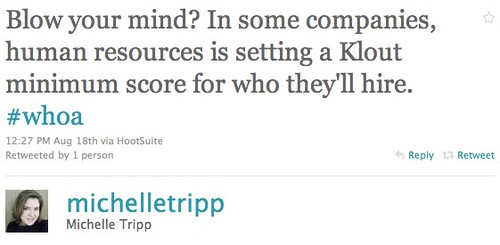 In old Japan, it was fairly common for a young person in the tradesman class to be apprenticed to a master. Whether it was blacksmithing, cooking, or any tradeskill, apprenticeship was just about the only way to get an education. What’s interesting about old Japanese apprenticeships was the duration and work asked of the apprentice. In many cases, an apprentice would spend many years doing very menial work, like sweeping the floor of the blacksmith shop.
In old Japan, it was fairly common for a young person in the tradesman class to be apprenticed to a master. Whether it was blacksmithing, cooking, or any tradeskill, apprenticeship was just about the only way to get an education. What’s interesting about old Japanese apprenticeships was the duration and work asked of the apprentice. In many cases, an apprentice would spend many years doing very menial work, like sweeping the floor of the blacksmith shop.
There’s a reason for this: unlike today, in which we teach only parts of any given discipline, being told to sweep the floor of the shop for four years taught something incredibly valuable to an apprentice. The apprentice got to see the total view of being a blacksmithing master.
What do I mean?
Everything from how the master greeted customers, to his accounting system, to his marketing, to his trade was witnessed by the apprentice. Instead of being told to market and greet customers in a textbook (with no details on how), the apprentice got to see the master working firsthand. The apprentice, over a period of years, got to understand the seasonality of the business and the ebb and flow of customers. Given the tumultuous times that comprised so much of medieval Japan, the apprentice likely got a chance to see what business was like in times of peace and war, what items were bought and sold, and how the market changed.
The apprentice could, within the bounds of etiquette, also ask the master how he handled very different situations, very different customers, and learn firsthand all of the different aspects of being a master blacksmith.
Compare this to how we teach and learn today. So much of the little stuff gets lost when you distill down a trade into textbooks (or blog posts), and some of the things lost along the way might be vital but not captured. For example, a master blacksmith may start his day with a very set routine for opening his shop. How much of that routine isn’t essential to being a good blacksmith?
Here’s another example: for centuries, the formula for making Damascus steel was lost. Only through extensive research was the recipe ever recovered, and only recently. It turns out that a particular iron ore in the Damascus region was responsible, as it contained traces of vanadium, normally an impurity that you’d want to cull out in the steelmaking process. The knowledge that you should buy your ore from Assad on the eastern side of town was lost along the way and with it went Damascus steel, because textbooks say that vanadium is an impurity and not an essential ingredient, so no one ever thought to put it back in.
How does this apply to modern day marketing, sales, and social media? Take a look at your own trade. Take a look at the people who are really successful at it, and if they allow it or freely share it, do your best to try out their systems for a period of time. Not just a few days, either – try it out for a longer duration, the same way an apprentice would, so that you can see how a system works in the ebb and flow of your own career.
While there’s virtually no one offering any kind of formal apprenticeship in social media or marketing in the same style as old Japan, there are plenty of internships to be had. Ask, too. Ask folks you respect if they have internships available, because working as an intern might not pay well but someone might say, “Okay, intern, here’s my Twitter management system. I’m tired of doing this every day, so why don’t I show you and have you do it for a while…” and you’ll have the opportunity to see their system at work firsthand (and the results it generates).
If you’re a successful practitioner of marketing, sales, or social media, generating impressive results, what would you teach an apprentice? How would you document your day, week, and month so that someone could see all the little things you do? (do you make coffee first or is there something else you do to start the day before coffee?)
Most important, which of all those little things are responsible for your success?
Did you enjoy this blog post? If so, please subscribe right now!



Get this and other great articles from the source at www.ChristopherSPenn.com! Want to take your conference or event to the next level? Book me to speak and get the same quality information on stage as you do on this blog.













 Ever stop to think about rain and how it works? Probably not until you’re in a drought and wondering where the rain is.
Ever stop to think about rain and how it works? Probably not until you’re in a drought and wondering where the rain is. In old Japan, it was fairly common for a young person in the tradesman class to be apprenticed to a master. Whether it was blacksmithing, cooking, or any tradeskill, apprenticeship was just about the only way to get an education. What’s interesting about old Japanese apprenticeships was the duration and work asked of the apprentice. In many cases, an apprentice would spend many years doing very menial work, like sweeping the floor of the blacksmith shop.
In old Japan, it was fairly common for a young person in the tradesman class to be apprenticed to a master. Whether it was blacksmithing, cooking, or any tradeskill, apprenticeship was just about the only way to get an education. What’s interesting about old Japanese apprenticeships was the duration and work asked of the apprentice. In many cases, an apprentice would spend many years doing very menial work, like sweeping the floor of the blacksmith shop. someone
someone  One of my favorite learning and teaching metaphors comes by way of both the martial arts and
One of my favorite learning and teaching metaphors comes by way of both the martial arts and  As a marketer, half of our job is analytical – figuring out what works and optimizing our methods for better results.
As a marketer, half of our job is analytical – figuring out what works and optimizing our methods for better results.